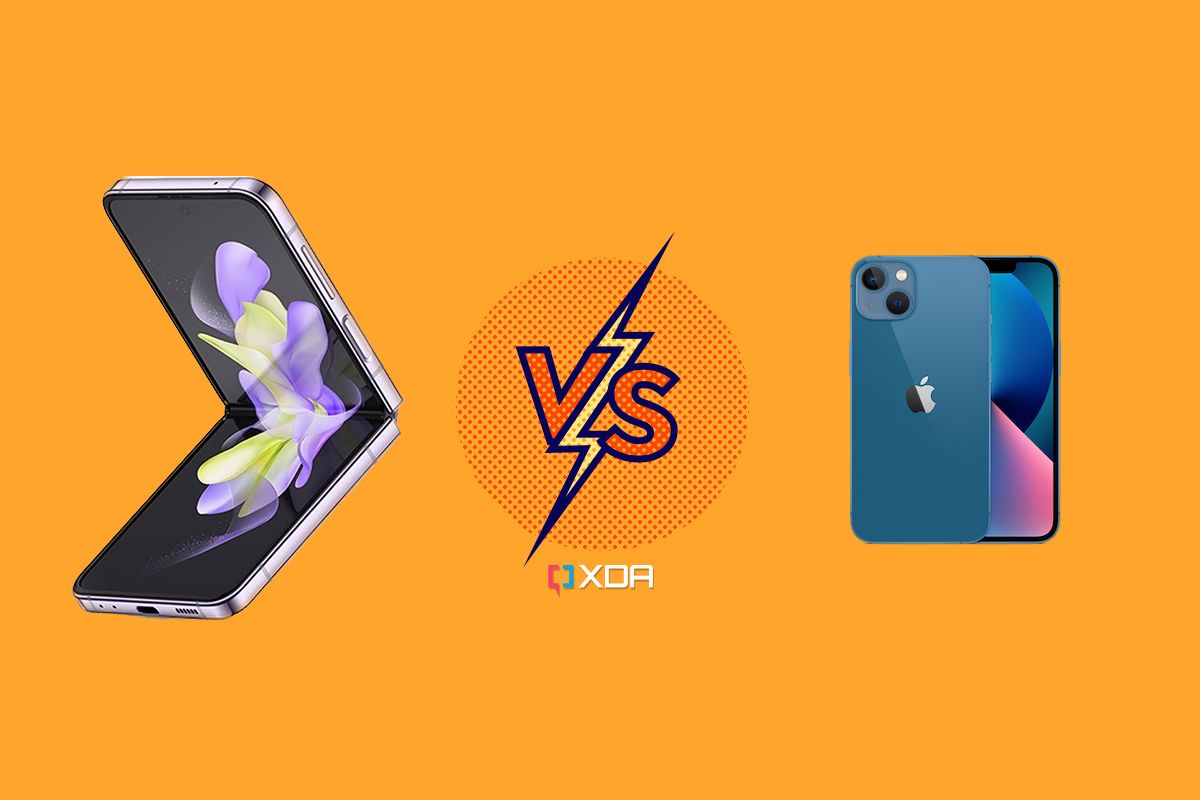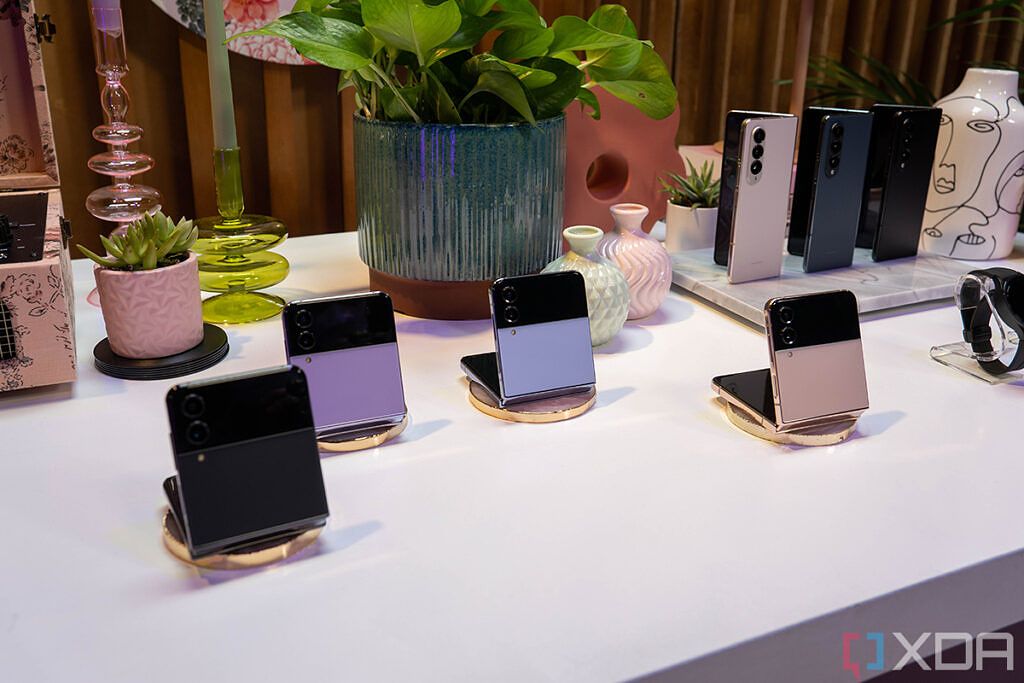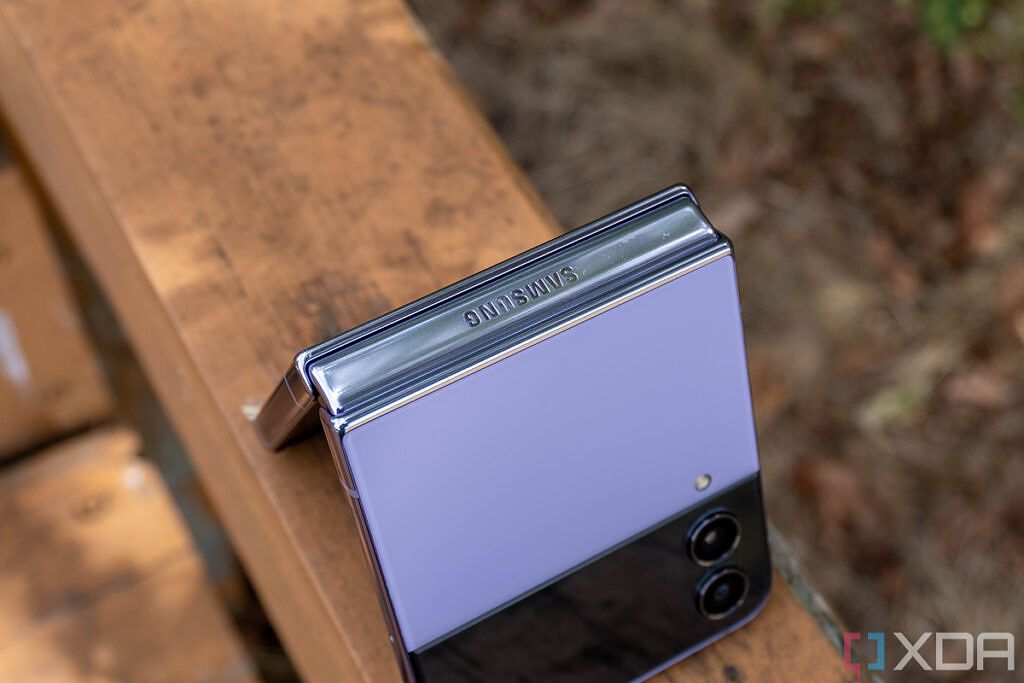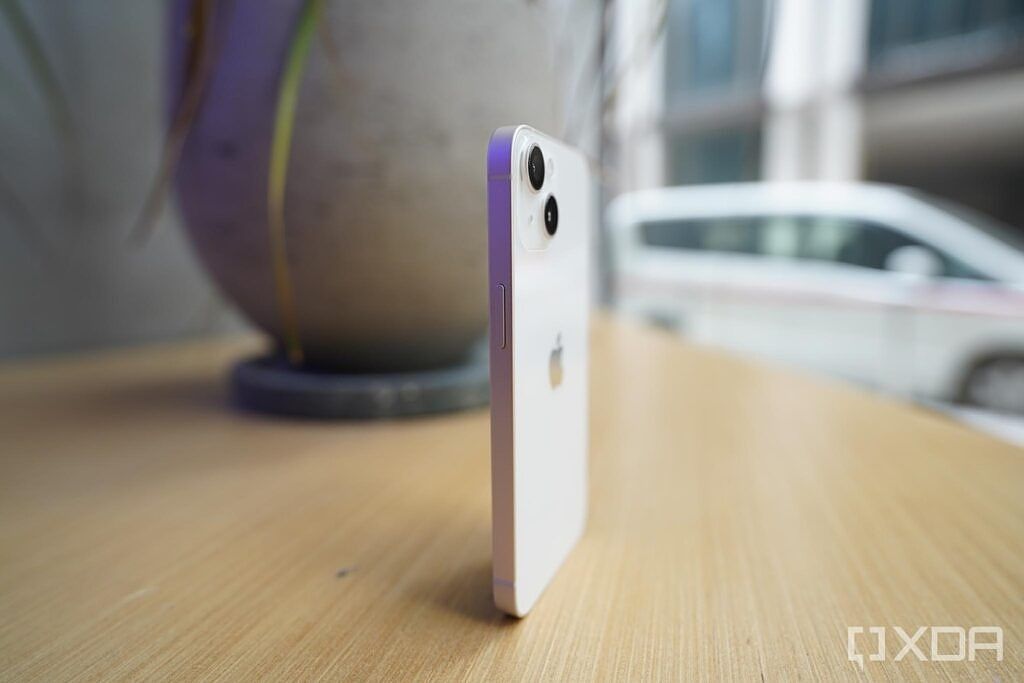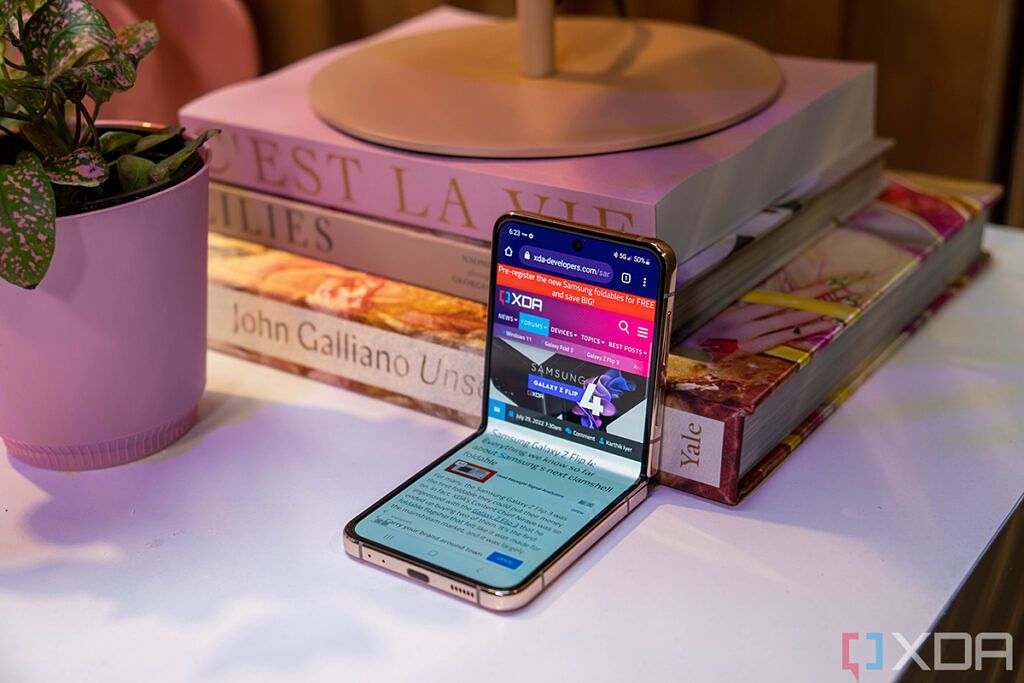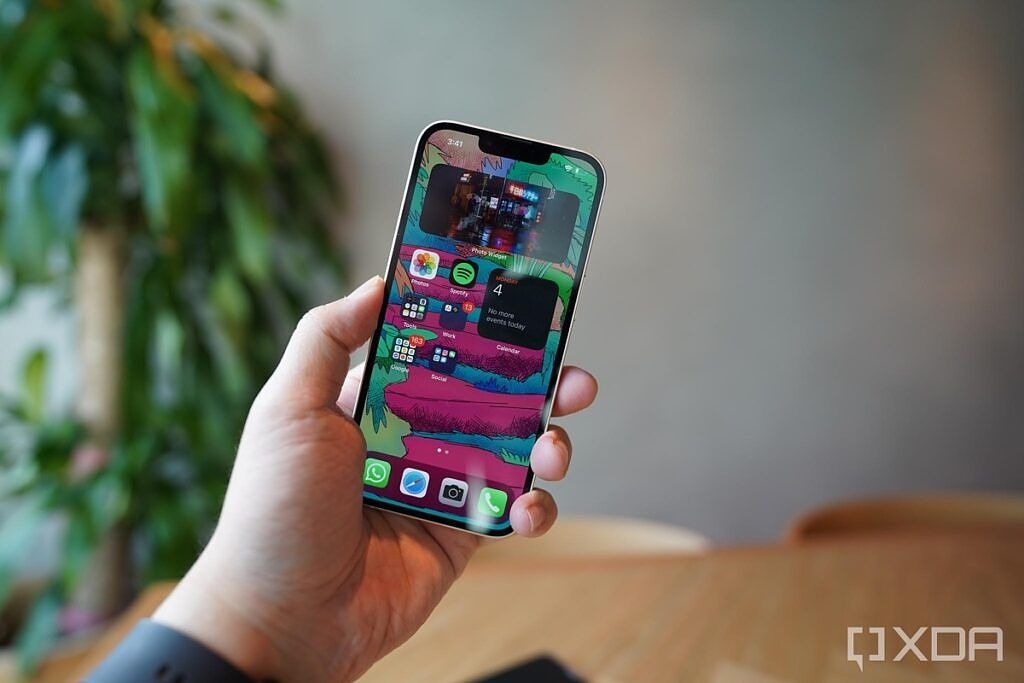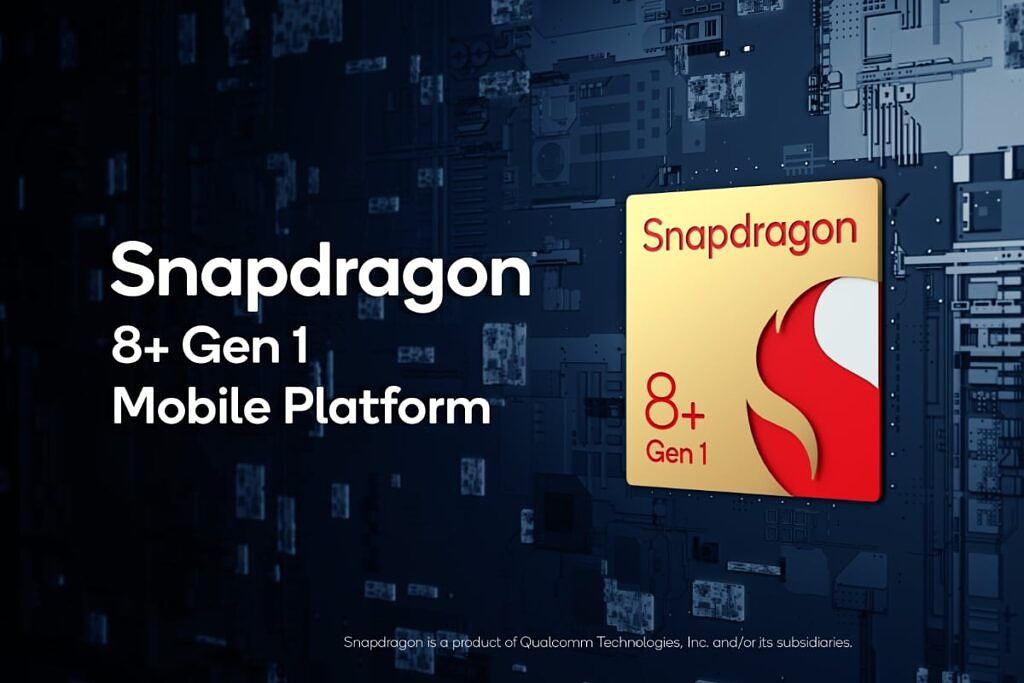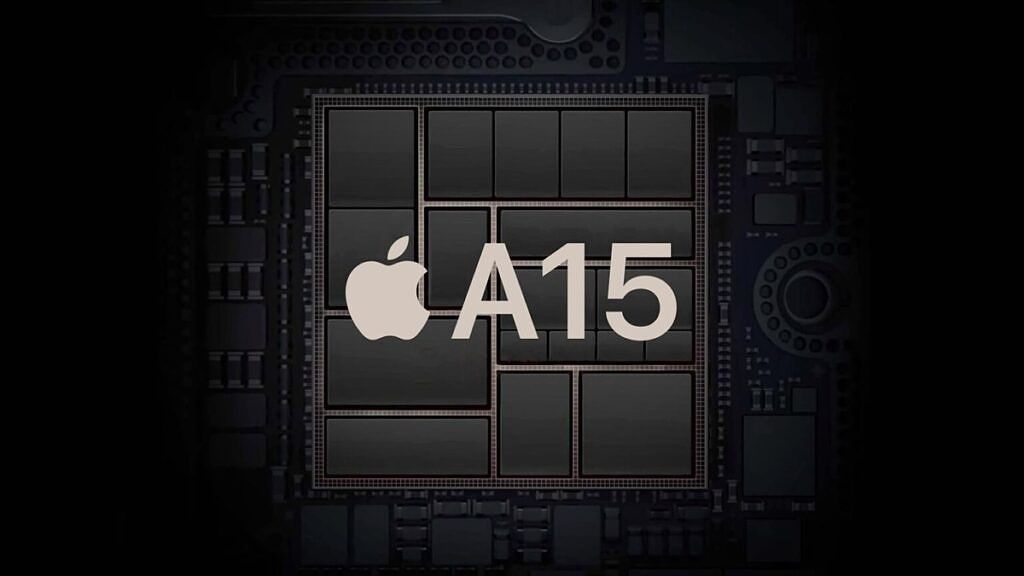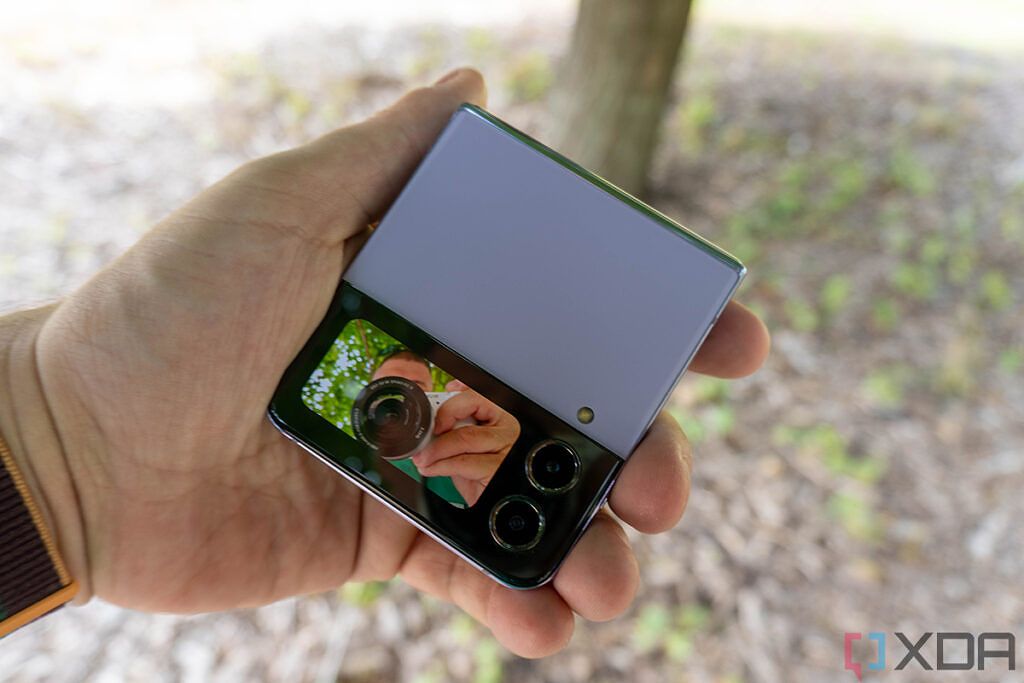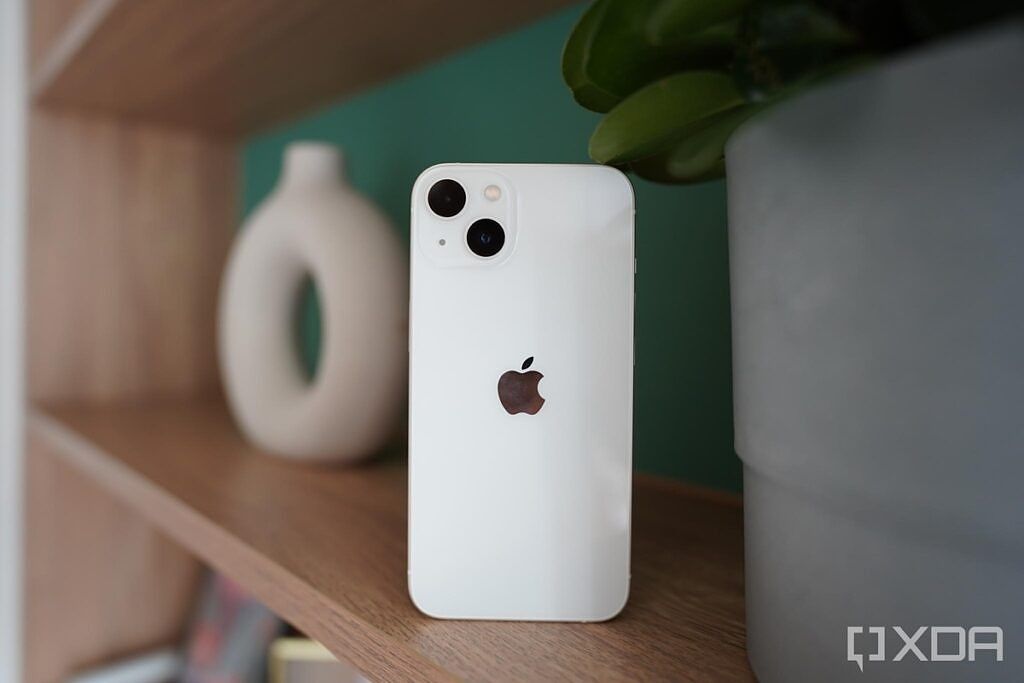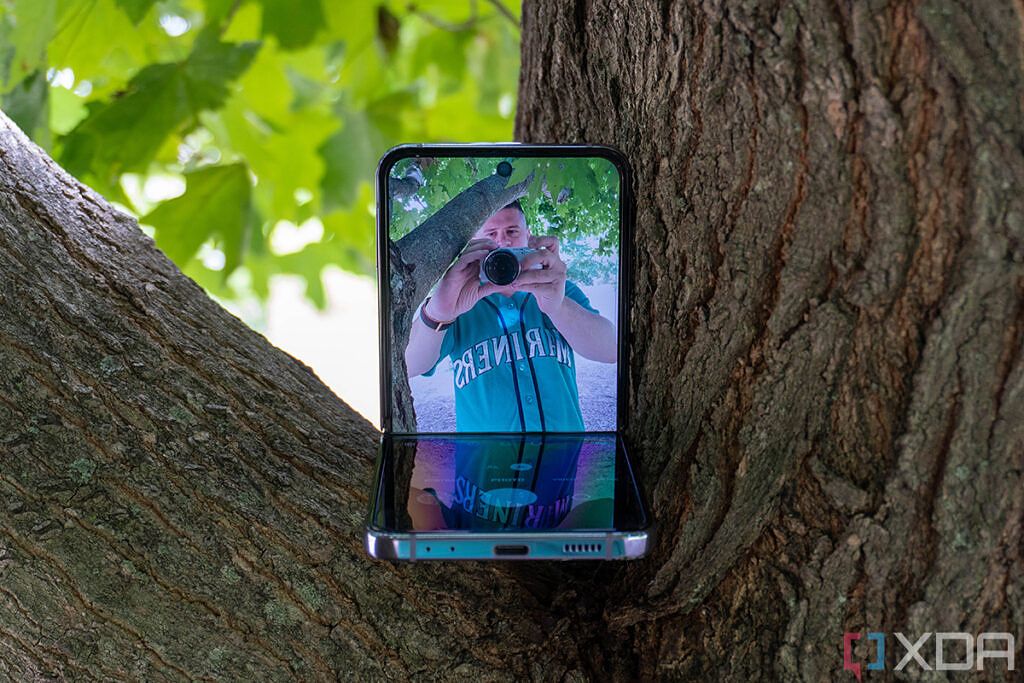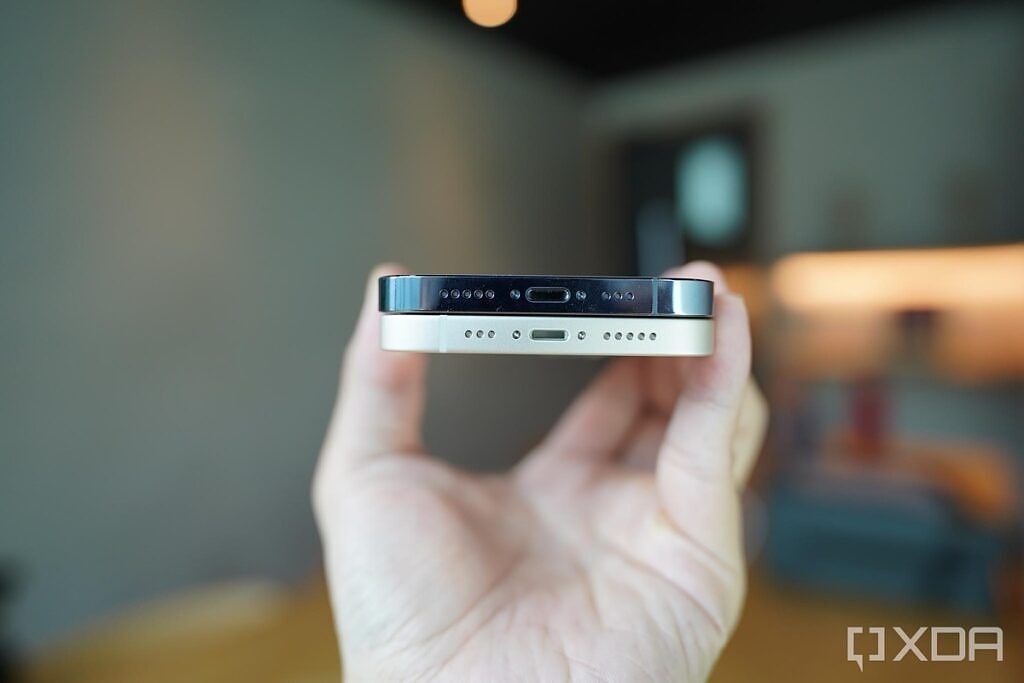Quick Links
Samsung revealed the Galaxy Z Flip 4 during its Unpacked event in the summer of 2022. This phone packs a foldable display that lets you transform it into a compact device. This makes it ideal for those who like large screens but dislike having large objects in their pockets. If you buy the Galaxy Z Flip 4, don't forget to protect it with a case. You wouldn't want that shiny phone to crack! On the other hand, we have the iPhone 13 — which Apple introduced in the fall of 2021. It features a familiar design and offers no innovative spins. If you decide to buy the iPhone 13 instead, also grab a case for the sake of potential accidents. This is the Samsung Galaxy Z Flip 4 vs Apple iPhone 13 — the battle between two very different phones manufactured by rival corporations.
Galaxy Z Flip 4 vs iPhone 13: Specifications
|
Samsung Galaxy Z Flip 4 |
Apple iPhone 13 |
|
|---|---|---|
|
Processor |
|
|
|
Body |
|
|
|
Display |
|
|
|
Cameras |
|
|
|
Memory |
|
|
|
Battery |
|
|
|
Connectivity |
|
|
|
Resistance |
|
|
|
Security |
|
|
|
OS |
|
|
|
Colors |
|
|
|
Material |
|
|
|
Price |
|
|
Design: The Z Flip 4 is from another Galaxy
Design is one of the first matters we look into when considering buying a new device. It's true that this aspect is mostly subjective. However, we can still make some objective observations and compare the builds of the two devices. The Galaxy Z Flip 4 and iPhone 13 follow two distinct schools of thought when it comes to their designs. They do have some similar elements, but they're mostly different-looking phones. We will now try to dissect these elements as much as we can to help you understand what each of the two has to offer in the design and build departments. Ultimately, the final say has to be yours.
For starters, both phones offer slim builds and dual rear camera systems — with the lens placements differing on the different phones. Though, perhaps the most notable distinction is the hinge positioned at the middle of the Galaxy Z Flip 4. Indeed, this Samsung phone folds in half, and it's an intentional feature — unlike Apple's infamous Bendgate on the iPhone 6. The iPhone 13 offers six different colors that beat Samsung's four. Though, the Galaxy Z Flip 4 has a Bespoke Edition, which allows users to personalize different parts of the device and choose between more colors. Apple tends to stick to what users find familiar. Samsung is more adventurous when it comes to that. So obviously, the design and build round goes for the latter corporation.
Display: One is a Flip, the other is a flop
When we flip these devices over, we're faced with two gorgeous screens. The iPhone 13 indeed has a slightly clearer display. Though, this battle goes way beyond just that. For starters, on the Galaxy Z Flip 4, you get a 120Hz refresh rate. This remains missing on the regular iPhone 13. So the Samsung phone has smoother animations when transitioning between different pages or scrolling through. The lower refresh rate on the iPhone 13 is more obvious than the lower resolution on the Samsung Galaxy Z Flip 4.
The Galaxy Z Flip 4 has a larger 6.7-inch screen that you can fold in half. The technology is still absent on all released Apple products. Additionally, the iPhone 13 has a notched display — which some users might find distracting. The Samsung phone goes for a hole-punch camera that doesn't take as much screen space. Ultimately, this round also goes for the Galaxy Z Flip 4, simply because the iPhone 13 display is too basic when compared to its rival. Samsung's foldable technology truly is futuristic. Meanwhile, Apple is seemingly stuck in the past decade, recycling its ideas over and over again.
Performance: Apple's A15 Bionic is quite iconic
When measuring performance, there are several factors to look into. These include the memory, processor, and operating system. After all, more RAM doesn't always equate to a smoother experience — and this is the case with the iPhone 13 and Galaxy Z Flip 4. While the latter has double the amount of RAM, it doesn't perform as well as the former. iOS is objectively not as hungry for resources as Android OS is. That's not to mention that Android OS is buggier than iOS as an operating system. Though, some users can't tolerate the additional constricts of iOS. We're not here to discuss which mobile operating system is superior — as this is a personal choice that you should pick.
When looking at benchmarks, the Snapdragon is slightly better than the Apple A15 Bionic when it comes to gaming and graphics. Otherwise, the A15 Bionic dominates the single- and multi-core performance tests. So overall, the Apple chipset has a higher score. Though, is the performance difference between the two phones notable enough to make an actual difference? Likely not. Both phones will get your everyday tasks done remarkably well. Similarly, the two devices can run virtually all of the mobile games in active development. So I'd dismiss this round if you don't have an OS preference.
Cameras: The Galaxy Z Flip 4 and iPhone 13 shoot in similar ways
Smartphone cameras are important in our modern age. After all, we document our lives through these devices and tend to spread them online for the masses to see. Fortunately, both the Galaxy Z Flip 4 and iPhone 13 offer dual 12MP rear camera systems. While they're not identical, the output should be relatively similar. The front-facing lens is a different story, though.
Apple's TrueDepth 12MP camera has a higher resolution and supports 3D mapping — which enables Face ID authentication. The Galaxy Z Flip 4, on the other hand, has a 10MP regular camera. For authentication, you have to rely on a side-mounted fingerprint scanner. Though, the Samsung phone doesn't need a tripod — since you can just fold it at 90º and set it on straight, horizontal surfaces. So if you tend to shoot videos frequently, you might want to consider the Galaxy phone. If you're after the personalized Memoji and sharper selfies, then the iPhone 13 is the better pick in this round.
Battery: The iPhone 13 is hungry for power
With both devices lasting a full day on a single charge with average use, let's consider other battery aspects. Staring with the port, the Galaxy Z Flip 4 has a USB Type-C one — which is more universally adopted and used. The iPhone 13, on the other hand, has an ancient, proprietary Lightning port. Both get the job done, but the former is simply superior. If you use devices from other popular brands, they likely have USB Type-C ports. So buying the iPhone 13 would mean carrying around an additional cable. Alternatively, you could switch to wireless charging, but that is slower and eats through the battery health at a faster pace.
Moving on, both phones support Qi wireless charging, with the iPhone 13 also being compatible with MagSafe. Though, more importantly, the Galaxy Z Flip 4 supports reverse wireless charging. This means you get to use your phone as a wireless charging pad for another phone or accessory. The feature is currently absent on all iPhone models. As a result, Samsung wins this round. Reverse wireless charging is such a basic and essential feature at this point. With newer AirPods supporting the Qi and MagSafe wireless charging standards, it would only make sense for Apple to support charging them through our iPhones. We can only hope to see this welcome addition introduced on newer iPhone models sooner rather than later.
Bottom Line: New vs Old
The Samsung Galaxy Z Flip 4 and Apple iPhone 13 are two very distinct phones that cater to different customers. Overall — as our previous rounds have shown — the Samsung product wins in terms of innovation and specification. Though, there are a few reasons to pick the iPhone 13. These include being on a more limited budget, already having other Apple products, or the unwillingness to sacrifice the extra years of software support for the sake of a foldable display. If you're not tied to any other devices and are willing to pay an additional $200, then the Samsung Galaxy Z Flip 4 is certainly the smarter and more exciting purchase here. If you are tied into the Apple ecosystem, then the choice has already been made for you.
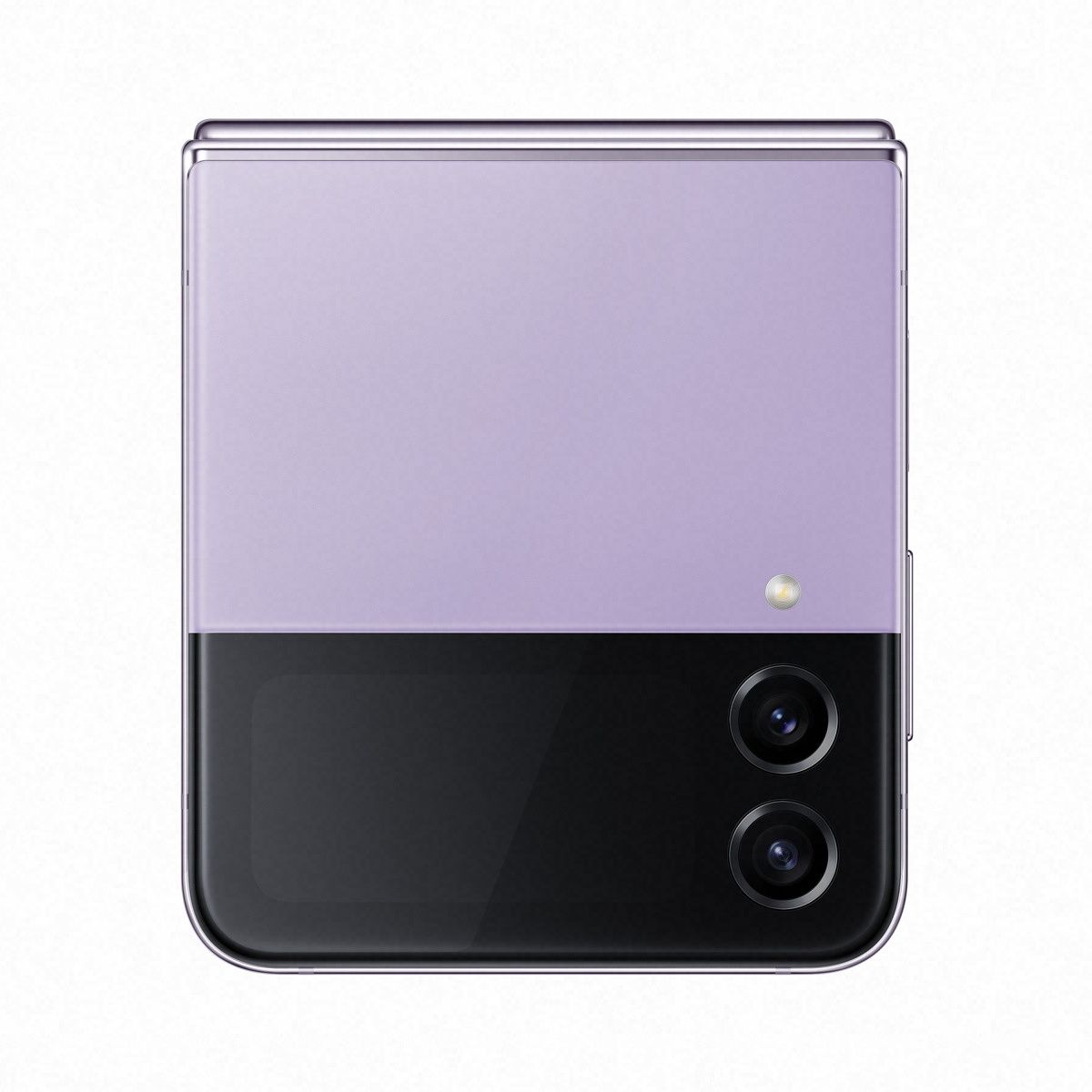
Samsung Galaxy Z Flip 4
The Galaxy Z Flip 4 offers a foldable display. It's compact, packed with innovative technologies, and worth every buck.
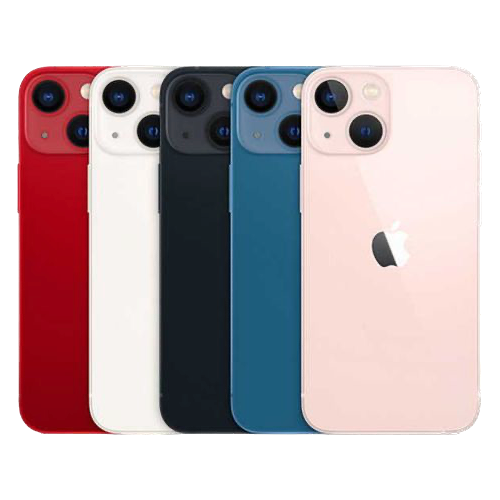
Apple iPhone 13
The iPhone 13 is a decent equivalent to the regular iPhone 14. It packs the same processor, has the same design, runs the same operating system, and costs less.
Which of the two phones will you be buying, and why? Let us know in the comments section below.

